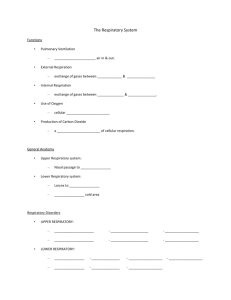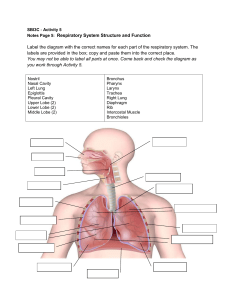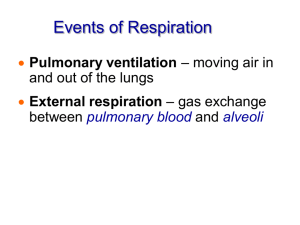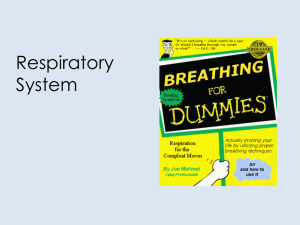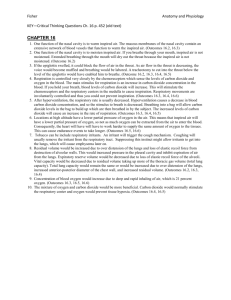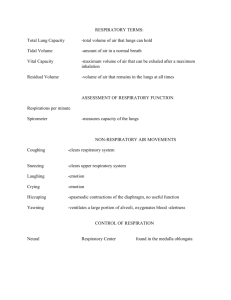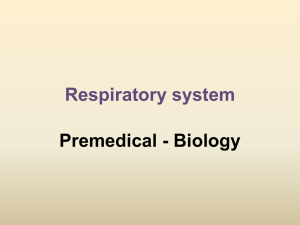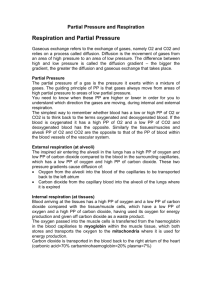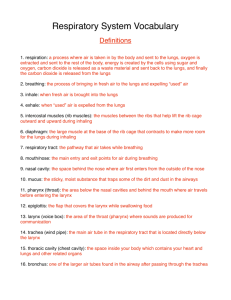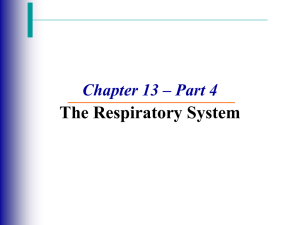Respiratory System Learning Outcomes & Vocabulary
advertisement
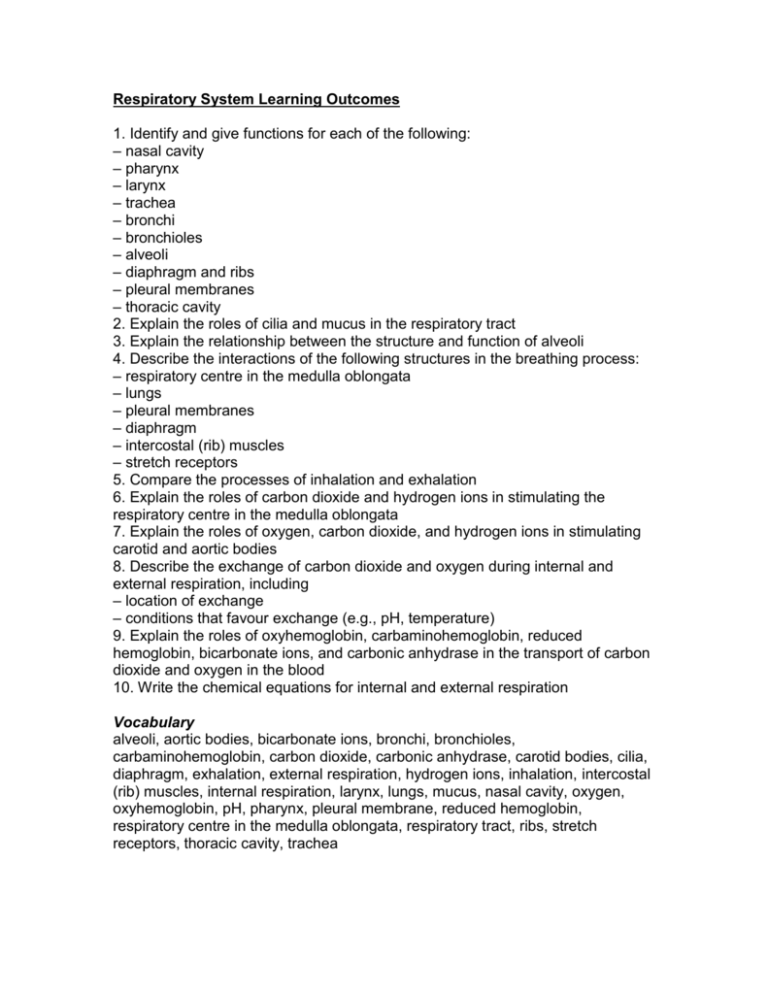
Respiratory System Learning Outcomes 1. Identify and give functions for each of the following: – nasal cavity – pharynx – larynx – trachea – bronchi – bronchioles – alveoli – diaphragm and ribs – pleural membranes – thoracic cavity 2. Explain the roles of cilia and mucus in the respiratory tract 3. Explain the relationship between the structure and function of alveoli 4. Describe the interactions of the following structures in the breathing process: – respiratory centre in the medulla oblongata – lungs – pleural membranes – diaphragm – intercostal (rib) muscles – stretch receptors 5. Compare the processes of inhalation and exhalation 6. Explain the roles of carbon dioxide and hydrogen ions in stimulating the respiratory centre in the medulla oblongata 7. Explain the roles of oxygen, carbon dioxide, and hydrogen ions in stimulating carotid and aortic bodies 8. Describe the exchange of carbon dioxide and oxygen during internal and external respiration, including – location of exchange – conditions that favour exchange (e.g., pH, temperature) 9. Explain the roles of oxyhemoglobin, carbaminohemoglobin, reduced hemoglobin, bicarbonate ions, and carbonic anhydrase in the transport of carbon dioxide and oxygen in the blood 10. Write the chemical equations for internal and external respiration Vocabulary alveoli, aortic bodies, bicarbonate ions, bronchi, bronchioles, carbaminohemoglobin, carbon dioxide, carbonic anhydrase, carotid bodies, cilia, diaphragm, exhalation, external respiration, hydrogen ions, inhalation, intercostal (rib) muscles, internal respiration, larynx, lungs, mucus, nasal cavity, oxygen, oxyhemoglobin, pH, pharynx, pleural membrane, reduced hemoglobin, respiratory centre in the medulla oblongata, respiratory tract, ribs, stretch receptors, thoracic cavity, trachea
